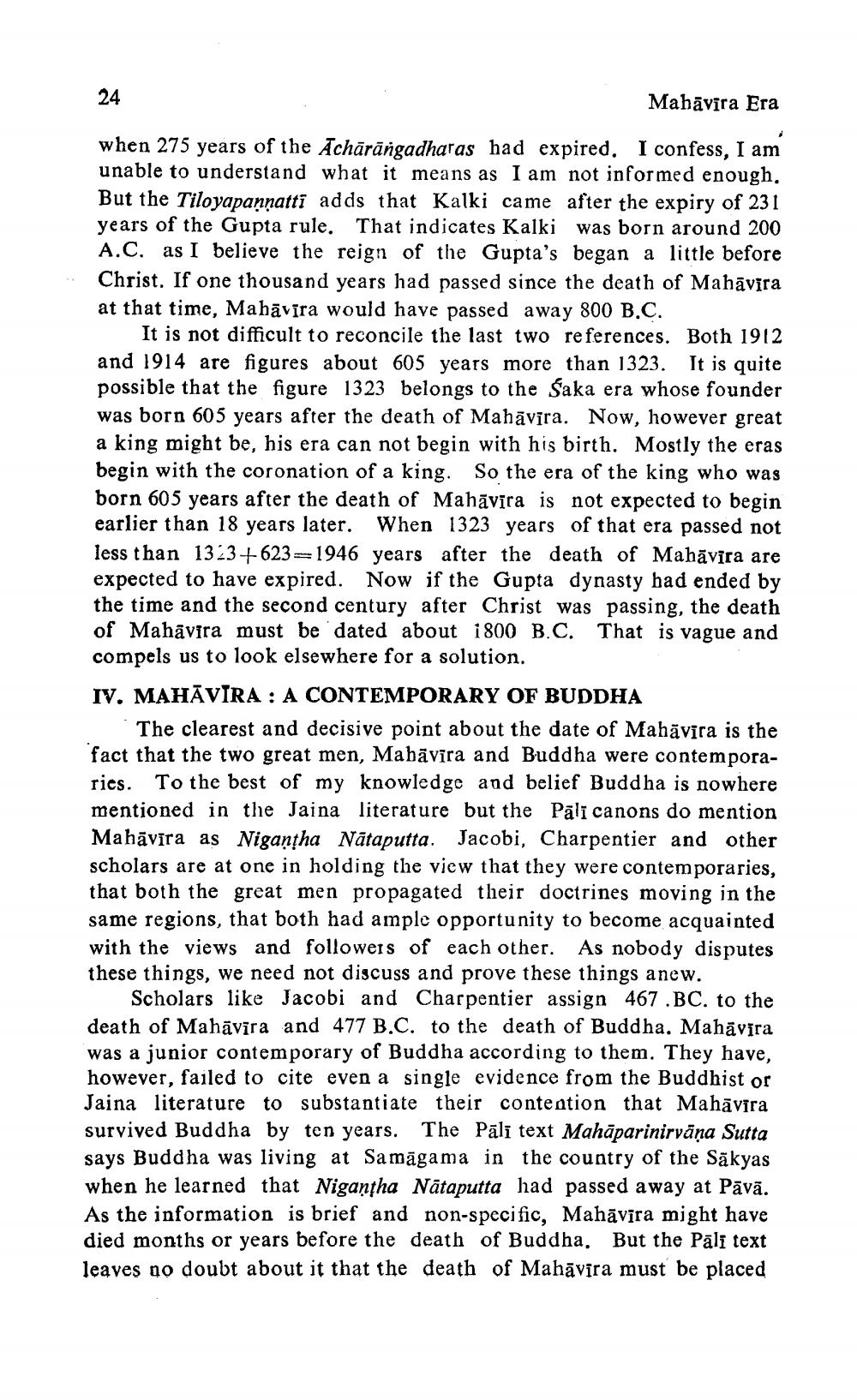________________
24
Mahāvīra Era
when 275 years of the Acharängadharas had expired. I confess, I am unable to understand what it means as I am not informed enough. But the Tiloyapanṇatti adds that Kalki came after the expiry of 231 years of the Gupta rule. That indicates Kalki was born around 200 A.C. as I believe the reign of the Gupta's began a little before Christ. If one thousand years had passed since the death of Mahāvīra at that time, Mahavira would have passed away 800 B.C.
It is not difficult to reconcile the last two references. Both 1912 and 1914 are figures about 605 years more than 1323. It is quite possible that the figure 1323 belongs to the Saka era whose founder was born 605 years after the death of Mahāvīra. Now, however great a king might be, his era can not begin with his birth. Mostly the eras begin with the coronation of a king. So the era of the king who was born 605 years after the death of Mahavīra is not expected to begin earlier than 18 years later. When 1323 years of that era passed not less than 1323+623-1946 years after the death of Mahāvīra are expected to have expired. Now if the Gupta dynasty had ended by the time and the second century after Christ was passing, the death of Mahavira must be dated about 1800 B.C. That is vague and compels us to look elsewhere for a solution.
IV. MAHAVIRA: A CONTEMPORARY OF BUDDHA
The clearest and decisive point about the date of Mahāvīra is the fact that the two great men, Mahāvīra and Buddha were contemporaries. To the best of my knowledge and belief Buddha is nowhere mentioned in the Jaina literature but the Pali canons do mention Mahavira as Nigantha Nataputta. Jacobi, Charpentier and other scholars are at one in holding the view that they were contemporaries, that both the great men propagated their doctrines moving in the same regions, that both had ample opportunity to become acquainted with the views and followers of each other. As nobody disputes these things, we need not discuss and prove these things anew.
Scholars like Jacobi and Charpentier assign 467.BC. to the death of Mahāvīra and 477 B.C. to the death of Buddha. Mahavira was a junior contemporary of Buddha according to them. They have, however, failed to cite even a single evidence from the Buddhist or Jaina literature to substantiate their contention that Mahāvīra survived Buddha by ten years. The Pāli text Mahāparinirvāṇa Sutta says Buddha was living at Samagama in the country of the Sakyas when he learned that Nigantha Nataputta had passed away at Pāvā. As the information is brief and non-specific, Mahāvīra might have died months or years before the death of Buddha. But the Pali text leaves no doubt about it that the death of Mahāvīra must be placed




